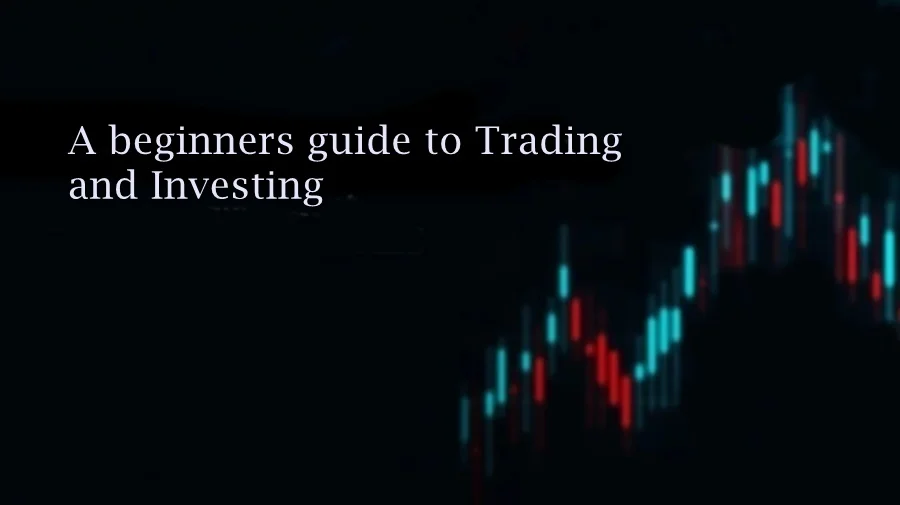
Table of Contents
Introduction
Trading the market is an art. Success and beauty of the art lies in its variables. There is no exact science in technical analysis that provides accurate results. We combine probabilities on the basis of our analysis of the market. Technical analysis differs from other analysis because of amalgamation of subjective and objective components. Fundamental Analysis is objective in nature, technical analysis, on the other hand, is objective as well as subjective. That is the reason technical analysis has been criticized because of its subjective nature. We’ll cover up the core concepts and how we can combine subjective and objective technical analysis to derive conclusion related to investment decision.
Subjectivity vs Objectivity in Market Technical Analysis
Technical analysis is a pre-requisite of trading and investing. Objective data of Fundamental Analysis helps us understanding the overall perspective of the market. Further we need Technical Analysis of Financial Instrument to draw investment decision. One thing on the basis of which technical analysis has been criticized is its subjectivity. Subjectivity is the personal judgement or opinion. This personal judgement is considered as detrimental to technical analysis.
Beginner trader must use objectivity in their technical analysis. Too much attention to subjective technical analysis can leads to potential losses. Its takes time understand market and be okay with if moves against your analysis. Trading itself is a risker business but subjectivity in technical analysis increase the risk.
What is Objective Technical Analysis?
It is duty of trader to control his/her emotions and psychology. Objectivity in technical analysis makes it easy for trader to control emotions by just following the rule. There are things that market can teach but takes time and effort. Objectivity in technical analysis refers to the use of quantifiable, rule-based methods and tools to analyze market data and identify trading opportunities. Unlike subjective analysis, which relies on personal judgment and intuition, objective technical analysis is based on predefined criteria and empirical data, ensuring consistency, reproducibility, and minimization of personal biases.
Components of Objective Technical Analysis
It would be right to say that objective approach is more logical and prevent from being dominated by emotions. Following are the component mostly considered in objective technical analysis:
- It includes technical indicators like RSI (whose overbought and oversold conditions are considered as powerful), Moving Averages (whose crossovers are considered as important) and Bollinger Bands (whose upper and lower band are important). There are other technical indictors as well but their purpose is almost same (gauging momentum and trend).
- Another important thing is the use of chart pattern in technical analysis. Objectivity of chart patter is that a reversal pattern that signals a potential change in trend. It can be back-tested with previous data.
- Trendline & Support and Resistance can be considered an important way of analyzing the market.
With the technical evolution in the field, all the three components are considered but professional do not trade on the basis of these components. Its objectivity does not provide confidence and logic behind the trade. Wyckoff Methods and SMC is now considered as more reliable. There is one more thing that helps in being consistent in objective technical analysis is Volume Analysis. In-depth volume analysis provides logic behind the move.
What are the advantages of Objective Technical Analysis
Human Opinions are biased. In trading, a trader must minimize the bias in order to be consistent and logical. Following are the advantages of Objectivity in technical analysis:
- Consistency and Reproducibility: Objective methods produce consistent results as they follow predefined rules and criteria, making the analysis reproducible by different analysts.
- Reduction of Bias: By relying on quantifiable data and empirical evidence, objective analysis minimizes personal biases and emotional influences.
- Validation and Backtesting: Objective strategies can be backtested on historical data to validate their effectiveness and adjust them for improved performance.
- Transparency: The rules and criteria used in objective analysis are transparent and can be easily communicated and understood by others.
How can we implement Objective Technical Analysis?
The following practices can help us in implementing Objectivity:
- Define Clear Rules: Establish clear and quantifiable rules for your technical analysis methods. For example, specify the exact conditions for a moving average crossover to signal a buy or sell.
- Use Reliable Data Sources: Ensure that your analysis is based on accurate and reliable market data. Use reputable data providers and tools for your technical analysis.
- Backtest Strategies: Test your technical analysis strategies on historical data to verify their performance and refine them based on the results.
- Maintain Objectivity: Stick to your predefined rules and criteria, and avoid letting personal biases or emotions influence your analysis.
- Continuously Improve: Regularly review and adjust your technical analysis methods based on new data, changing market conditions, and insights from backtesting.
What is Subjective Technical Analysis?
Subjectivity in technical analysis involves personal judgment, intuition, and interpretation of market data, patterns, and trends. As a trader we do not directly rely on subjective technical analysis. There are the following things that are important in the analysis:
- Interpretation of trending markets and ranging markets.
- Analysis of overall market structure and contextual analysis.
- The accuracy of two things are dependent upon extensive experience of market which can be attained by being objective in the market.
Experienced analysts might rely on their past experiences and gut feelings to interpret technical signals. For example, an experienced trader might recognize a setup that has previously led to profitable trades. However, beginners are advised to experience the market and follow the rule. With the passage of time, they will become able to know how to and when to apply personal judgement to the market. The major benefit of subjectivity is that it allows to be flexible in the market and we can think about the other side of the market.
What are the challenges of Subjective Technical Analysis?
Subjectivity in technical analysis encourage bad habit among trader which became the major cause of their failure. The major challenges are:
- Bias and Emotions: Subjective analysis can be influenced by personal biases and emotions, leading to inconsistent decision-making. Confirmation bias, overconfidence, and fear can impact judgments.
- Lack of Consistency: Subjective methods may lead to inconsistent results since they rely on personal judgment rather than standardized rules. Difficult to back-test and validate consistently.
Conclusion
Both subjective and objective technical analyses have their strengths and weaknesses. Subjective analysis brings flexibility and human intuition, while objective analysis offers consistency and rigor. Combining both can provide a balanced approach to technical analysis, allowing analysts to leverage the advantages of each method.
I’m Abdullah Shah, a content writer with three years of experience in crafting engaging and informative content. My background in market analysis complements my work, allowing me to create content that resonates with audiences. I’m also a seasoned practitioner in the forex and crypto markets, with a strong foundation and deep interest in finance. My passion for the financial world drives me to produce content that is both insightful and valuable for those interested in understanding market trends and financial strategies.





